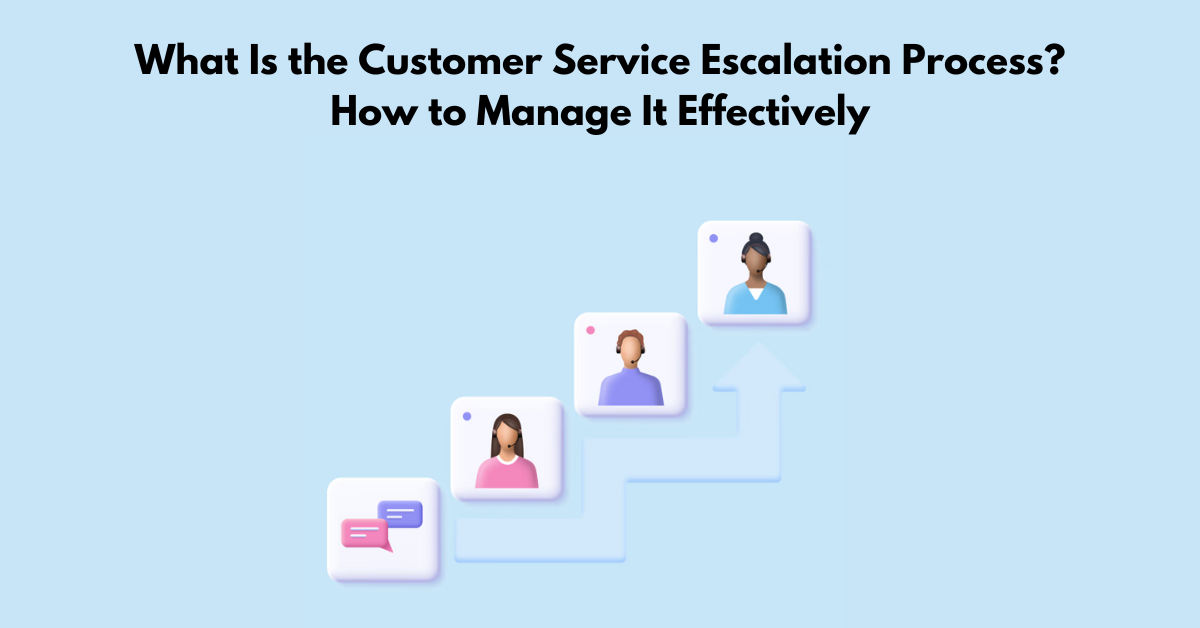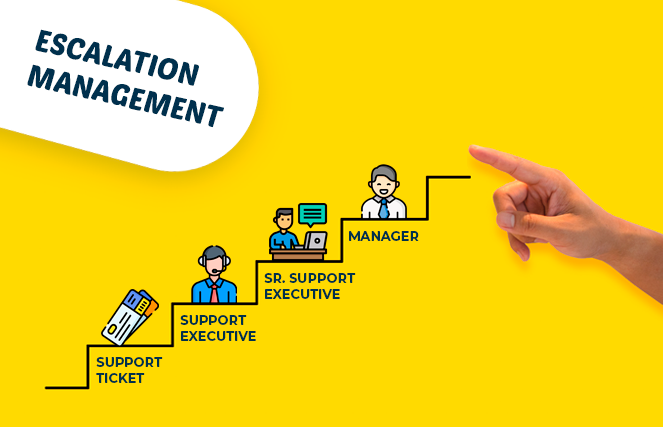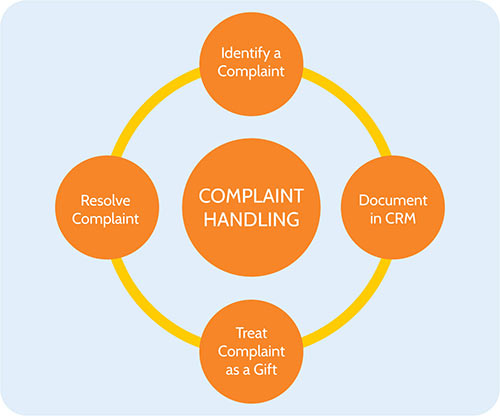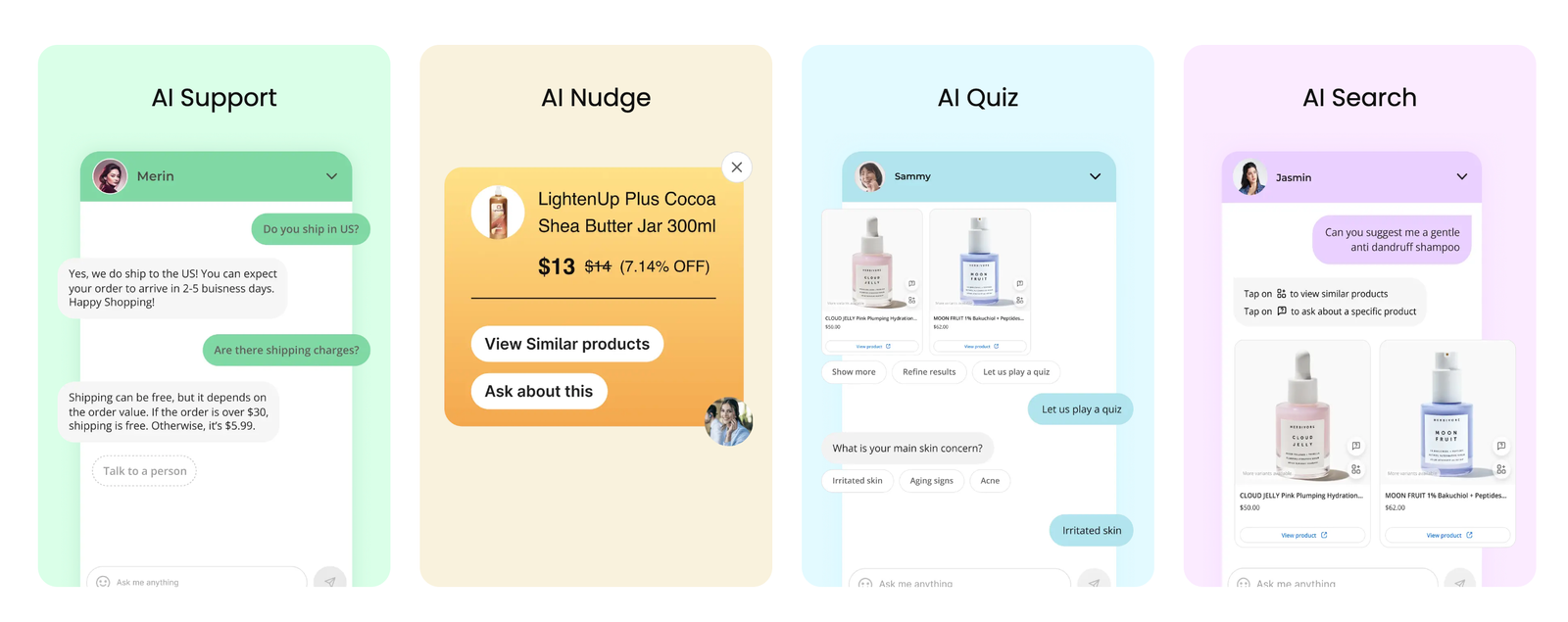What Is the Customer Service Escalation Process? How to Manage It Effectively

One essential tool for handling complicated or unsolved problems is the escalation process for customer service. Comprehending its subtleties and employing efficacious management tactics can considerably augment the comprehensive customer experience. By exploring the complexities of escalation procedures, companies may effectively and clearly handle difficult situations, building customer satisfaction and trust. This blog seeks to examine the foundations of the customer service escalation process, providing information on its significance and useful techniques for effective management, and eventually enabling companies to foster closer bonds with their clientele.
What Is Customer Service Escalation?

Customer service escalation refers to the procedure or protocol put in place by businesses to address and resolve customer issues that cannot be satisfactorily resolved at the initial point of contact. When a customer's problem or concern surpasses the capabilities of frontline support or encounters repeated obstacles, it is escalated to higher levels of authority or specialized teams within the organization. This customer escalation process ensures that complex or urgent issues receive the attention and resources required for resolution, ultimately aiming to provide customers with a satisfactory outcome and uphold the reputation of the business.
Customer Service Response Time: Overview, Importance, Rules, Techniques
How To Handle Customer Escalations?

Handling customer escalations effectively requires a combination of empathy, communication skills, and problem-solving abilities. Here are some key steps to manage customer support escalation:
Listen Actively: As an escalations department, you allow the customer to express their concerns fully without interruption. Demonstrate empathy and validate their feelings to show that their concerns are understood and respected.
Apologize Sincerely: Regardless of fault, offer a genuine apology for any inconvenience or frustration experienced by the customer. A sincere apology can go a long way in diffusing tension and rebuilding trust.
Gather Information: Thoroughly understand the nature of the issue by asking relevant questions and gathering all necessary details. Document the information accurately to ensure a comprehensive understanding of the situation.
Assess and Acknowledge: Evaluate the severity and urgency of the escalation. Acknowledge the customer's concerns and reassure them that their issue will be addressed promptly and appropriately.
Offer Solutions: Propose viable solutions or alternatives to resolve the issue. Empower frontline staff with the authority to make decisions or escalate to higher levels of management if necessary.
Communicate Transparently: Keep the customer informed throughout the resolution process. Provide regular updates on progress and timelines, managing expectations realistically.
Follow-Up: After resolving the issue, follow up with the customer to ensure their satisfaction and address any lingering concerns. Use feedback to identify opportunities for improvement in the future.
Learn and Improve: Conduct escalation point of contact review to identify root causes and areas for improvement in customer service processes or product/service offerings. Implement necessary changes to prevent similar escalations in the future.
Customer Service Policy: Why It's Important & How To Create It
Customer Service Escalation Process: 6 Steps

Here are six key steps in a customer service escalation process:
Initial Triage: Frontline support staff assess the customer's issue and attempt to resolve it at the first point of contact. If the issue cannot be resolved or requires further attention, it is escalated to the appropriate level within the organization.
Evaluation and Documentation: The escalated issue is thoroughly evaluated, and relevant information is documented. This includes details of the customer's concern, previous interactions, and any attempted resolutions.
Assigning Ownership: A designated individual or team takes ownership of the escalated issue. This ensures accountability and streamlines the resolution process by assigning responsibility to the most qualified personnel.
Investigation and Resolution: The assigned team investigates the escalated issue, gathering additional information if necessary. They work to identify the root cause of the problem and develop a plan to resolve it effectively.
Communication: Transparent communication is maintained with the customer throughout the resolution process. Regular updates are provided to keep the customer informed of progress, expected timelines, and any potential challenges.
Follow-Up and Feedback: After the issue has been resolved, follow-up communication is conducted with the customer to ensure satisfaction and address any remaining concerns. Feedback from the customer is valuable for identifying areas for improvement in the escalation process and overall customer service experience.
Customer Service Escalation Management: Best Practices
Define Service Level Agreements (SLAs): Clearly establish response times and resolution goals for escalated concerns. SLAs serve as a guide for efficiently prioritizing and handling escalations.
Develop Escalation Procedures: Create structured pathways detailing the steps and criteria for escalating issues based on SLAs. Ensure clarity on when and how to escalate matters to higher authorities or specialized teams.
Equip with Proper Tools: Provide your team with the necessary tools and technology to streamline the escalation process. This includes ticketing systems, communication platforms, and knowledge bases to aid in efficient resolution.
Foster Soft Skills: Offer training and support to customer-facing representatives to enhance their soft skills in managing escalations. These skills encompass active listening, empathy, conflict resolution, and de-escalation techniques.
Pursue Continuous Improvement: Analyze past escalations to uncover patterns, root causes, and areas for enhancement. Utilize these insights to refine processes, update SLAs, and implement corrective measures to prevent future occurrences.
Maintain Transparent Communication: Keep customers informed throughout the escalation process. Provide regular updates on the status of their concern, anticipated resolution timelines, and any pertinent developments. Transparent communication fosters trust and assures customers that their issues are being addressed effectively.
Customer Service Escalation Management: Examples
Technical Support Escalation: A customer encounters a complex technical issue with a product or service that frontline support cannot resolve. The support representative escalates the issue to a specialized technical team or higher-level support tier equipped to handle advanced troubleshooting.
Billing Dispute Escalation: A customer disputes a billing discrepancy that cannot be resolved through initial communication with customer service. The issue is escalated to a billing specialist or manager who has the authority to investigate the matter further and provide a resolution.
Product Quality Concern Escalation: A customer expresses dissatisfaction with the quality of a product or service and requests a refund or replacement. The frontline representative escalates the issue to the quality assurance team or product management for evaluation and decision-making.
Service Level Agreement (SLA) Violation Escalation: A customer complains about a breach of the agreed-upon SLA, such as a missed deadline or failure to meet service standards. The escalation process involves notifying relevant stakeholders, conducting an investigation, and taking corrective actions to address the SLA violation.
Customer Dissatisfaction Escalation: A customer expresses frustration or dissatisfaction with the handling of their issue by frontline support. The escalation pathway may involve transferring the customer to a supervisor or manager who can provide additional assistance, address concerns, and restore customer confidence.
How Manifest AI can help in improving customer service escalation process?

Integrating an AI shopping assistant like Manifest AI into your customer service framework can significantly improve the escalation process. By initially handling routine inquiries and common issues, this AI tool can efficiently resolve many customer problems without human intervention. For more complex issues requiring escalation, Manifest AI can gather preliminary information, categorize the problem, and route the query to the appropriate human agent, armed with the necessary details to provide a swift and accurate resolution. This not only speeds up the resolution process but also frees up customer service agents to focus on more complicated issues, enhancing overall service efficiency and customer satisfaction.
Conclusion
In conclusion, companies looking to provide outstanding client experiences must comprehend and handle the customer service escalation process well. Through the implementation of well-defined procedures and channels for reporting problems, companies can effectively and compassionately handle intricate client concerns. Effective escalation management entails providing frontline employees with the hard and soft skills they need to handle customer concerns in a timely and competent manner. Making constant improvements to processes and feedback analysis guarantees that the knowledge gained from previous escalations is put to use to better future interactions. In the end, successfully managing escalations, building trust, loyalty, and long-term relationships with customers require open communication and a customer-centric approach.

.png)
